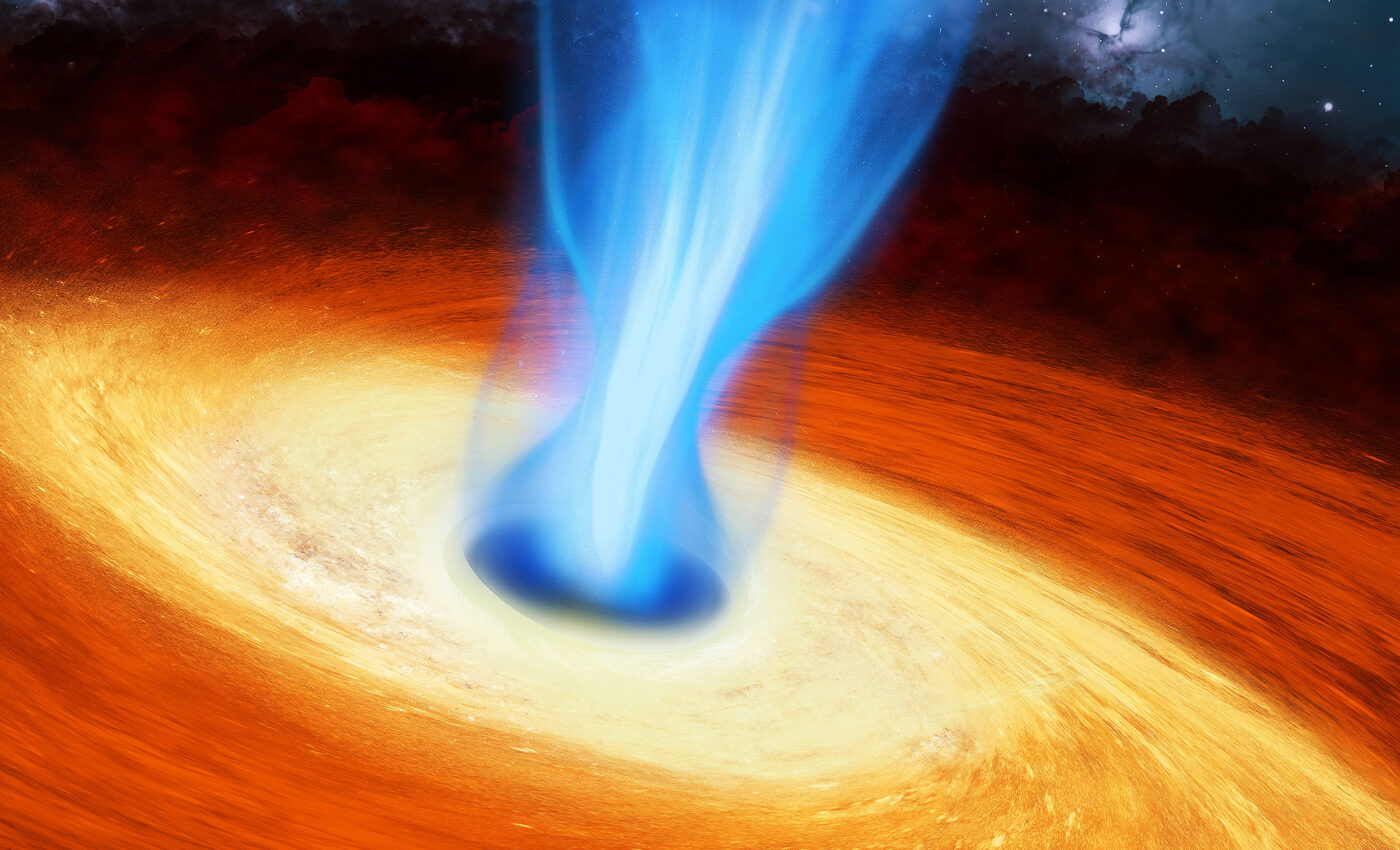
Black hole "waterfall" discovery proves Einstein right again
Astronomers have provided the first observational proof of a key prediction made by Einstein’s theory of gravity concerning black hole “waterfalls” hiding throughout the universe.
The study confirms the existence of a “plunging-region” around black holes, where matter stops circling the hole and instead falls straight in, experiencing some of the strongest gravitational forces yet identified in the galaxy.
The research was led by Dr. Andrew Mummery and his colleagues at Oxford University Physics, as part of their ongoing investigations into the outstanding mysteries surrounding black holes.
The team utilized X-ray data gathered from NASA’s space-based Nuclear Spectroscopic Telescope Array (NuSTAR) and Neutron star Interior Composition Explorer (NICER) telescopes to study smaller black holes relatively close to Earth.
Understanding the basics
Black holes are regions in space where gravity reigns supreme. These invisible giants form when massive stars, having exhausted their nuclear fuel, collapse under their own immense weight.
The resulting gravitational pull is so powerful that nothing, not even light, can escape its grasp once it crosses the event horizon, the point of no return.
Black holes come in various sizes, from stellar-mass black holes that are a few times more massive than our Sun, to supermassive black holes lurking at the hearts of galaxies, with masses millions or even billions of times greater.
Despite their reputation for being destructive forces, black holes play a crucial role in shaping the universe, influencing the formation and evolution of galaxies, and providing us with a unique laboratory to test our understanding of the fundamental laws of physics.
Einstein’s black hole theory triumphs
Einstein’s theory of gravity differs from Newton’s in its prediction that particles cannot safely follow circular orbits sufficiently close to a black hole.
Instead, they rapidly “plunge” toward the black hole at close to the speed of light. This study marks the first time researchers have been able to demonstrate this phenomenon happening.
“This is the first look at how plasma, peeled from the outer edge of a star, undergoes its final fall into the center of a black hole, a process happening in a system around ten thousand light years away,” Dr. Mummery explained.
There are many black holes in the galaxy, and astronomers now have a powerful new technique for using them to study the strongest known gravitational fields.
Einstein’s theory predicted that this final plunge would exist, but this is the first time scientists were able to demonstrate it actually happening.
“Think of it like a river turning into a waterfall – hitherto, we have been looking at the river. This is the first sight of the waterfall,” Dr. Mummery enthused.
Using x-ray vision to peer into black hole hearts
The confirmation of the plunging region’s existence marks an exciting new development in the study of black holes. It allows researchers to investigate this final area around them and fully understand the gravitational force at play.
As Dr Mummery stated, “This final plunge of plasma happens at the very edge of a black hole and shows matter responding to gravity in its strongest possible form.”
Astrophysicists have long been trying to understand what happens close to a black hole’s surface by studying discs of material orbiting around them.
The existence of the plunging region, where it is impossible to stop a final descent into the black hole, has been a topic of debate for many decades.
The Oxford team’s detection of this region using X-ray telescopes and data from the International Space Station settles this debate and opens up new avenues for research.
Black hole research going beyond the event horizon
While this study focused on small black holes closer to Earth, a second study team from Oxford University Physics is part of a European initiative to build a new telescope called The Africa Millimetre Telescope.
This telescope is expected to greatly enhance our ability to make direct images of black holes, both at the center of our own galaxy and far beyond.
The team hopes to observe and film, for the first time, the event horizons of large black holes, which are believed to drag material from space toward their center in a spiral as the black hole rotates.
These represent almost unimaginable sources of energy, and their observation would mark another significant milestone in our understanding of these fascinating cosmic objects.
Proving Einstein correct once again
As we continue to push the boundaries of our understanding of black holes, the incredible discoveries made by the Oxford University Physics team serve as a testament to the enduring power of Einstein’s theory of gravity.
In summary, by confirming the existence of black hole waterfalls at the plunging region, and detecting the strongest gravitational forces yet identified in the galaxy, these researchers have proven the voracity of new methods for exploring the most extreme environments in the universe.
With the development of cutting-edge telescopes like The Africa Millimetre Telescope, we stand on the brink of a new era in black hole research, one that promises to unveil the secrets of these enigmatic cosmic giants and bring us closer to understanding the fundamental laws that govern our universe.
The full study is published in the journal Monthly Notices of the Royal Astronomical Society.
—–
Like what you read? Subscribe to our newsletter for engaging articles, exclusive content, and the latest updates.
Check us out on EarthSnap, a free app brought to you by Eric Ralls and Earth.com.
—–













